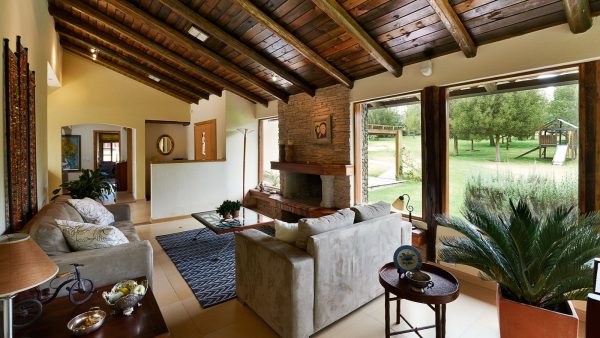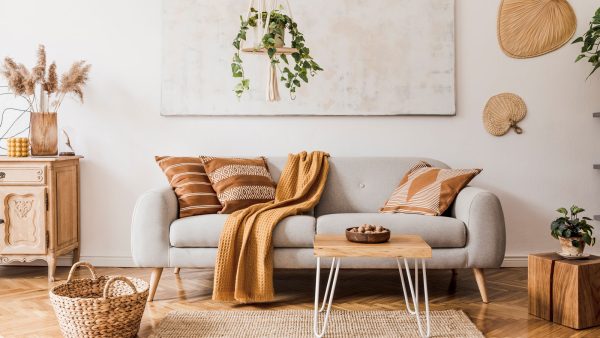It’s easy for smaller accents like switch plates and outlets to go unnoticed. But these days, the majority of our necessities have to be plugged in. So, you’re probably wondering what color you should use for your switch plates and outlets. This can sometimes be a little hard to decide on when you have white walls, which offer too much freedom. We have carefully researched what colors are ideal for your switch plates and outlets on white walls.
Because white walls can work with just about anything, the colors of your switch plates and outlets should serve the overall style of the room. However, white is also a hot neutral, so you can match the colors of your switch plates and outlets to agree or contrast with white’s temperature:
- Gray or Black
- Brown or White
- Yellow, Orange, or Red
- Blue or Green
Switches and outlet covers are often at a noticeable height because they need to remain within comfortable reaching distance. This means they can have a surprising impact in any room. Keep reading to learn how you should coordinate the colors of these covers, including their relationship with each other and the rest of the room.
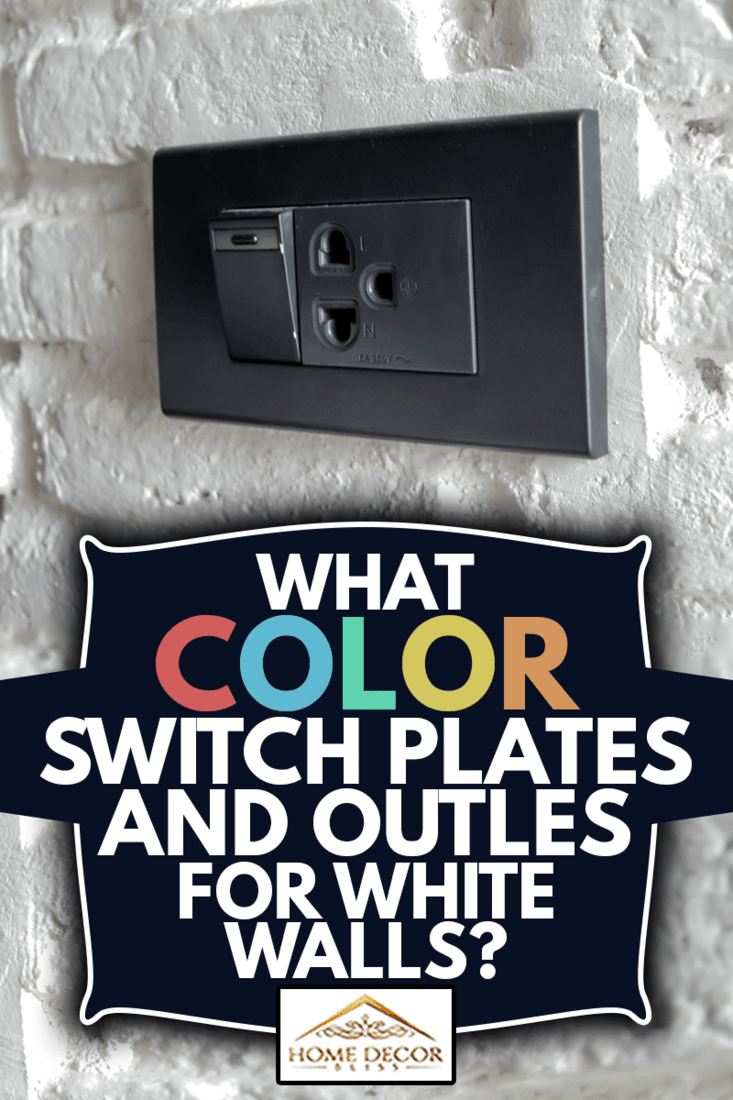
Switch Plate And Outlet Colors For White Walls
Gray or Black
Gray and black are both neutrals, just like white. That means they’ll work with pretty much anything, since they are also without any true color. But gray and black have a very cool temperature, compared to white. White is the most reflective neutral, which is why it’s so bright.
So, if you want to create some serious contrast, gray and black will do the job against white walls. This may seem like a strange idea, but this kind of bold move is useful for certain interior designs.
For example, Cottage and Farmhouse styles often welcome a lot of neutrals. Here, you’re as likely to see cozy white walls as deep, weathered colors like gray.
Modern and Industrial interior styles also have a focus on minimalist ideas. They use every kind of neutral in the book because the goal of a minimalist scene is to create sleek, open spaces. None of the decor should feel elaborate or detailed. Neutrals are the perfect fit for rooms like that.
Brown or White
Another option for neutral colors would include either brown or more white. Although brown is only a near neutral, it can still function like a pure neutral. However, brown can also sometimes be considered a cooler form of orange.
Brown is less of an industrial color than gray or brown. But it’s a cooler neutral than white, which means it can still balance out the heat without creating total contrast.
Altogether, this means that you can use brown against white walls in more circumstances than the other neutral pairs. Brown is always an earthy color, which tends to agree with any interior design that focuses on nature. But the majority of fixtures and decor are made of wood anyhow.
Yellow, Orange, or Red
All three of these are considered the “warm” colors on the color wheel. This means that using these colors for the outlets and switch plates should agree with the temperature of your white walls. They will also fit in with any bold interior design. Typically, only some unique styles will welcome louder, brighter colors.
For example, you might want to recapture the seventies with these hot, floral colors. Or, you can decorate a kitchen this way without implying any kind of decade. Kitchens are supposed to feel airy, bright, and floral. Children’s rooms and nurseries should also be exciting and cheerful, so you can use any variation of warm colors together.
You might also find strong, bright colors with an abstract scene, or even an Arts and Crafts interior design. These rooms invite loud, unique personalities and artwork. You are likely to have a very colorful room here, with plenty of DIY projects and decor.
And that’s why all of these styles are also going to have white walls to work with. You will often find white walls serve as the perfect canvas, bright and lively without feeling too distracting. They are the ideal way to keep your room from feeling too busy. That’s essential in the interior design styles mentioned above.
Blue or Green
Blue and green are likely matches for an area with white walls. That may surprise you, but these colors are actually comfortable to use with both darker and lighter shades. You can use a baby blue against white walls, and end up imitating a peaceful and cloudy sky.
It will also sit well in any room that uses a lot of natural lighting and water, such as bathrooms and kitchens. After all, blue is frequently associated with water and the skies.
However, blue is also naturally cool. Green is a little warmer by nature, which means that its brighter shades can look more comfortable on white. Just keep in mind that green is a bit unusual, and doesn’t work with too many interior styles. Most of the time, it’ll only help out styles that want to lean into nature themes.
Should light switches match wall color?
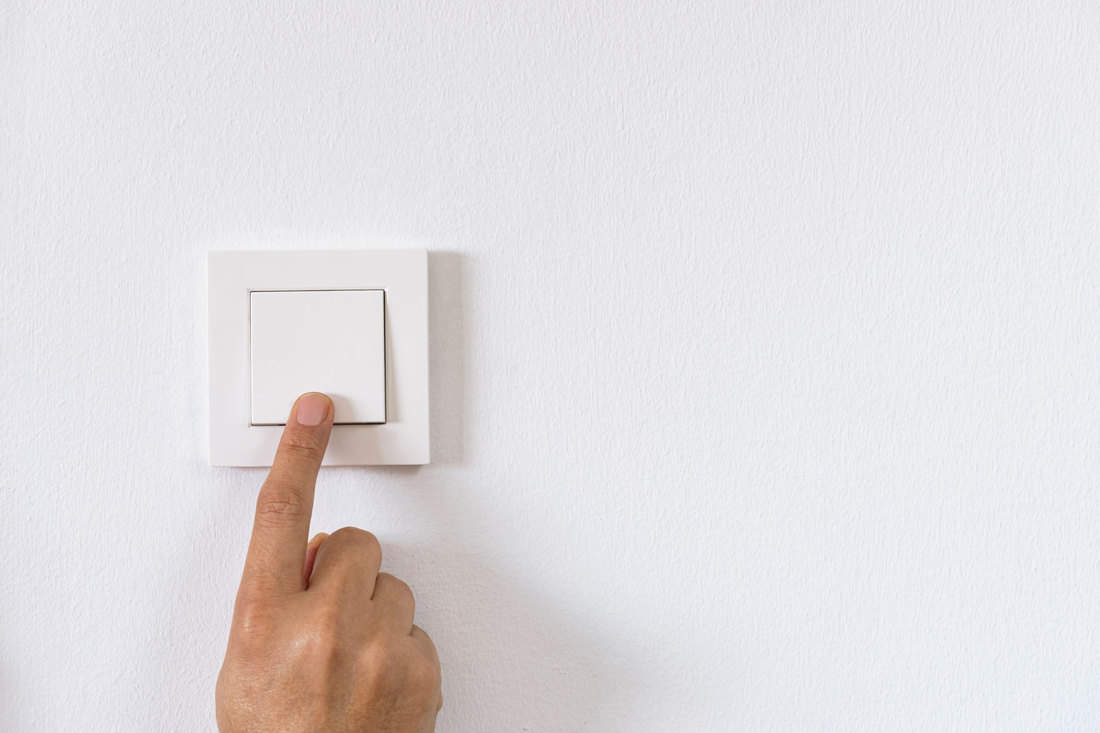
We may include affiliate links and curated AI content to highlight top design styles.
Most of the time, your light switches are going to match the wall when you have white walls. This way, you don’t create too much contrast against the brightness of the walls.
However, keep in mind that “matching” isn’t to be taken literally. Instead, the light switches will often have another shade of white. When you match colors, you make them agree by keeping at least two or three shades between them.
Then again, when the walls are not white, there won’t be nearly as much contrast if you don’t match the colors. So, if your wall is any other color than white, the light switch doesn’t necessarily have to match the wall color.
Sometimes, you can intentionally make your light switches pop so long as they match with another focal point in the room. For example, in the kitchen, you can match your light switches with the kitchen cabinets. The cabinets occupy so much area in the room, your light switches won’t feel out of place, even on white walls.
Should outlet covers be the same color as walls?
Electrical outlets tend to be a little better hidden than light switches. This is often true even in rooms like the kitchen, where there are more outlets at the countertop level. Although the outlets are within reach because of this design, they might still be hidden from view behind appliances.
So, if you have white walls, you might want to use a different color for the outlet covers. This could make it easier for you to find the outlets when you’re working around cooking appliances. In fact, outlets are generally found at the foot of your walls, making them difficult to find and use.
But they are designed this way to remain out of sight. If you want to reinforce that idea, then you can match your outlet covers. This can be useful if you don’t want something to disrupt the flow of the furniture and any decor on the floor. You can read this post to learn what color floors go with white walls.
What color should electrical outlets be?
Electrical outlets do not require any kind of special color for safety reasons or anything like that. They can generally enjoy the same freedom as any switch plate. But this does not apply to the wires inside.
Also, keep in mind that the cords for most appliances are either black or white. If you already know what color most of your cords will be, you should probably create some contrast with those. This will ensure that it is easy to plug in and remove the appliances in any given room.
Should light switches be painted?
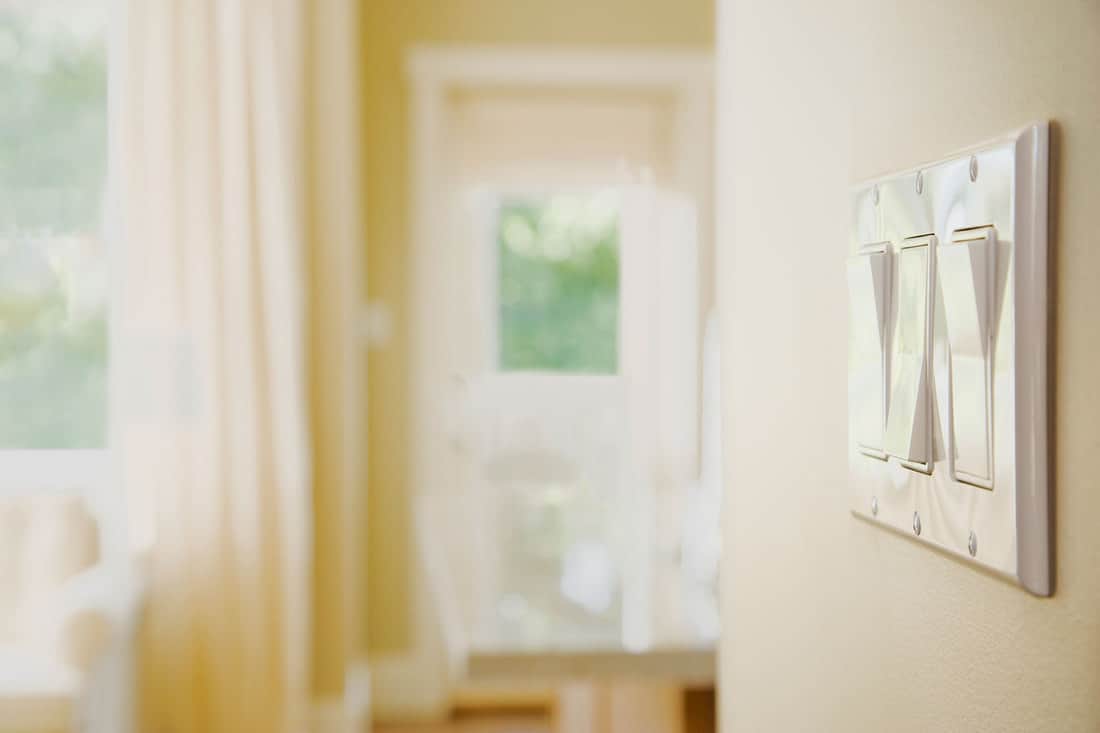
It’s usually best if the light switches themselves share an identical color with the switch plate. That’s because your wall can end up looking a little too busy if the switches are another color. Even if you separate the switches from the plates by a couple of shades, it can feel too distracting.
That’s because the switch plate occupies more surface area than the switches, even though they both serve the same purpose. Your switches and switch plates should look like they operate together. You can read this post to learn how high switches have to be off the floor.
Click here to find this colored outlet cover on Amazon.
Keep in mind that it might actually be possible to simply purchase a gray or black cover for both light switches and outlet covers. These pre-painted products would save you the trouble of buying extra tools and repainting the covers yourself. They may be referred to as "wall plates" if you begin shopping around.
Should switch plates and outlet covers match?
You can also use an identical color between the switch plates and the outlet covers. They both provide power to an electrical appliance.
Since they share the same function, matching the covers is an easy way to create consistency throughout the house. You are probably going to have these fixtures in every room. Matching them can help tie together rooms with different styles, such as nurseries, kitchens, or the garage.
Summary

Switch plates and outlet covers are small but important additions to any room. They protect the electrical systems behind the walls in any room. But they can potentially stick out like a sore thumb when you decide to restyle the room. Now you know which colors will have different effects on white walls, no matter what room they’re in.



